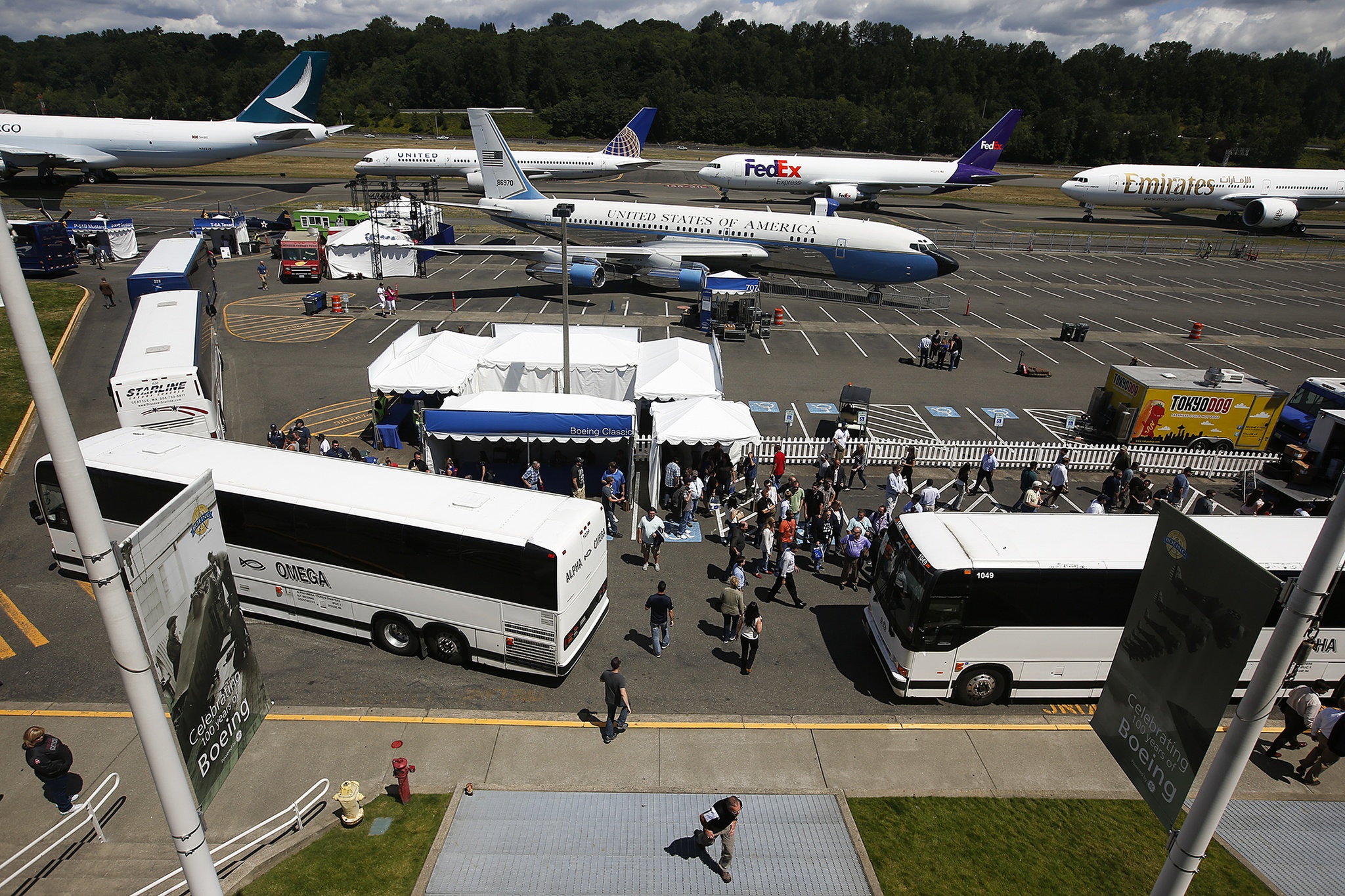SEATTLE — Boeing’s 100th birthday highlighted the company’s history of technological breakthroughs and offered bold visions of its future — landing a man on Mars and supersonic travel.
The aerospace giant’s near-term future is much more focused on improving existing products and developing derivative versions.
The company’s prop planes, jetliners, rockets and satellites have changed how people travel, communicate, connect and perceive the world, Boeing chief executive and president Dennis Muilenburg told a crowd of 3,000 employees, retirees and relatives Friday.
His remarks were interrupted by the loud buzz of a Boeing Model 40C, which passed overhead and landed at Boeing Field, where the festivities were held. It is the oldest flying Boeing airplane. The Model 40 helped airmail boom in the late 1920s.
“Boeing has won for 100 years because of innovation, and we’re going to continue to win in our second century with innovation,” Muilenburg said.
Technology has changed everything at the company: the shape of airplanes, what they’re made of, how they’re made.
When Delaware Shields started at Boeing’s Plant 2 in Seattle in 1981, production looked much like it had when Boeing’s 707 ushered in the Jet Age in the 1950s. “We even clocked in by hand,” he said.
Today, the 57-year-old makes ceiling panels for airplane cabins in Everett.
The company’s Everett plant is leading the way for Boeing’s next jump in automating assembly.
Boeing leaders see automation as key to the company’s competitiveness in the future. The company’s strategy has two parts: building on existing strengths and finding new areas for competitive advantage. Muilenburg called them “strength on strength” and “sharpen and accelerate.”
“How do we revolutionize how we build airplanes?” Muilenburg said.
“We can’t stand still. We have to drive forward,” he said.
“We’re currently building the rocket with NASA that will take the first human to Mars,” he said.
Boeing’s commercial airplane business is more focused on improving versions of existing airplanes, such as its 737 MAX and 777X. Both are derivatives of successful existing airplanes. The 777X will have the most-advanced and biggest composite wing, which is being made in Everett.
The company is exploring a new airplane for a niche slice of the market, referred to as middle of the market airplane. That market segment was filled by Boeing’s 757, which ended production in 2004.
The company is in talks with customers about their needs for a mid-market airplane. While a new airplane is possible, Boeing also is considering whether existing planes or a derivative can meet customers’ needs, Muilenburg said.
Once the company defines the market, it will “determine the details of how we actually do that work,” he said. “We’re investing here in Puget Sound for the long run, and all of our future work around commercial airplanes will continue to be centered here. That said, we want to leverage all of the capabilities we have around the country and around the globe. That’s good for Boeing and good for our customers.”
Dan Catchpole: 425-339-3454; dcatchpole@heraldnet.com; Twitter: @dcatchpole.
Talk to us
> Give us your news tips.
> Send us a letter to the editor.
> More Herald contact information.

























